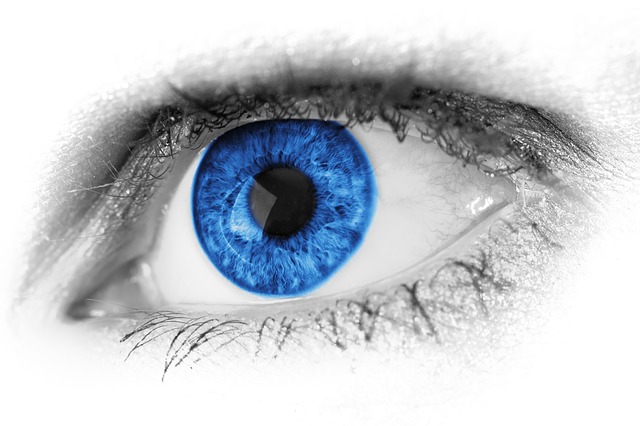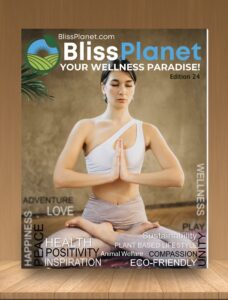Brian Boxer Wachler, MD, is the world’s leading authority on keratoconus, refractive surgery, and creator of the revolutionary I-Brite® Eye Whitening procedure. He has devoted his career to the field of vision correction. For two decades, he has been a pioneering doctor with a thriving career in clinical, academic, and laboratory settings. He boasts an unparalleled history of awards and accomplishments — many of which have singlehandedly changed the practice of ophthalmic surgery. He is currently the medical director of the eponymous Boxer Wachler Vision Institute in Beverly Hills and a staff physician at Los Angeles’ famed Cedars Sinai Medical Center. More information at www.perceptualintelligence.com.
What is Perceptual Intelligence?
Perceptual Intelligence (PI) is how we interpret and occasionally manipulate our experiences to distinguish fantasy from reality. PI is based on our senses and instincts, but it is frequently influenced and distorted by our emotions and memories. Just as with other forms of intelligence, some people have higher PI than others. However, PI is an acquired skill. It begins with awareness and requires practice before it becomes habitual. So you may find yourself initially overreacting to a situation or circumstance, but with proper knowledge and a different perspective, you may start to ask yourself: Am I interpreting this correctly and making the best choice? Each one of us unknowingly uses our Perceptual Intelligence, which affects decision-making – in good and bad ways.
You’ve been fascinated by the connections among our five senses — sight, hearing, smell, taste, and touch — and how our brains register and interpret them. Why is it that our senses do not always match reality?
Our senses take in the feast of sensory inputs which then travels to the brain. That’s where our perceptions originate and for a wide variety of reasons – our perceptions may accurately reflect reality or our perceptions may derail us into fantasy. In PERCEPTUAL INTELLIGENCE we explore the brain’s ability to interpret and make sense of the world, why our senses do not always match reality, and how we can influence the world around us through perceptions, inward and outward. Indeed, not everything is exactly as it seems, and many factors influence our perceptions. For example, a medical condition known as synesthesia can cause a person to literally see music or taste sounds. (A second form of synesthesia connects objects such as letters and numbers with a sensory perception like color or taste.) Even the common cold, which affects the eyes, ears, nose, and throat — not to mention the brain, when our heads are filled with gook and congestion — has been known to distort our perceptions of everyday events. When we are under the weather from the flu, our perceptions of the world around us might seem so foggy that we may have pessimistic views of occurrences we would ordinarily view optimistically. As for sleep deprivation, any insomniac or parent of a newborn will tell you that his or her perception of the world is way off track and that memories of the time subsequent to those sleepless nights seem distorted and unreal. And we don’t need to review criminal case investigations, forensic evidence, and “beer goggle” studies to see how alcohol and drugs impair our senses. The good news is the book walks you through a variety of everyday, engaging examples that we all experience and how to improve your Perceptual Intelligence to make better decisions in life.
How can we influence the world around us through perception?
Our world can change because we experience it through our own perceptual filters. We have a unique take on reality, informed by their upbringing, psychology, biology, genetics, habits, and memories, to name just a few influencing factors. The pope’s view of life after death is diametrically opposed to that of the great theoretical physicist Lawrence Krauss. Yet each is convinced that his view is the correct one. Is the pope blinded by faith? Is Dr. Krauss closed to any idea that isn’t strictly evidence-based? We all create our own version of the world. It is unlike anyone else’s. And how could it not be? It is shaped by our perceptions.
We generally mold our perceptions like Play-Doh to suit the story we create of our lives. But sometimes our perceptions work behind the scenes, shaping our thoughts and behaviors as if we were asleep at the wheel. When we have a vague memory of a painful incident, what purpose does it serve? Why bother keeping that potentially incorrect perception of the event when you can make something good come of it? This is where the sniper ability of Perceptual Intelligence comes in. A well-developed PI can identify and take down a faulty idea that tries to sabotage you. Having high PI is recognizing that your mind is more plastic than you think and can be molded and reworked as needed. PI can be improved, just like any other skill, such as driving a car, playing a sport, or learning an instrument. Improving PI can have a profound effect on life – better decision-making abilities that can reduce the risk of financial, health, family, and other consequences that can arise from low Perceptual Intelligence. Having high PI can improve happiness.
How do celebrity personas manipulate the masses?
Celebrities — by this I mean anyone in the spotlight, including film/stage/TV actors, rock stars, comedians, Instagram icons, YouTube famers, and reality TV stars with more than fifteen minutes of fame — can have a mesmerizing influence on our PIs, causing us to feel that anyone famous is magnetic, especially in terms of success, money, talent, and looks. Many people are intimidated by celebrities and/or long to become them because their minds have been manipulated by the image and lifestyle and fooled by the makeup and surroundings.
The influence of celebrity on individuals and on our culture has become so prevalent, due to the immediacy of social media, that our minds are coaxed into believing that famous people are superior to the rest of us; this has led to a phenomenon known as the “halo effect.” Often people take the words and images of celebrities more seriously than those of scientists, educators, or thought leaders who are genuine experts on the subjects, which leads to ignorance and battered PI. Even the pervasive social media word follower has connotations of being led by a Pied Piper down a certain path. In the modern era, it has become standard for famous individuals to make statements on everything from politics to the environment to human rights to child vaccinations – and wield influence on PI in the process. Many examples are discussed in PERCEPTUAL INTELLIGENCE and it will help make your PI bulletproof from unfounded influences.
Why do some people see Jesus in their cornflakes, or the Virgin Mary in a grilled cheese sandwich (and are willing to pay $28K for said sandwich)?
In 2004, a Floridian woman auctioned off her remarkably well-preserved ten-year-old grilled cheese sandwich for a whopping $28,000. What could possibly have made that sandwich worth so much to anyone? (Hint: answer is not special cheese from France). The reason was the Miami resident claimed that she saw an image of the Virgin Mary emblazoned in the pattern of the sandwich’s skillet burns. Pareidolia is a misperception warping our Perceptual Intelligence in which the brain interprets a vague or obscure stimulus as something familiar, clear, and distinct. Our minds misinterpret what we are seeing based on a range of factors, including our childhood upbringing, serendipity, and deeply embedded quirks in our neural processing. Pareidolia often manifests with recognizing faces. Have you ever looked at the clouds and seen a face up there? Of course – that’s pareidolia.
Our fascination with faces begins at birth. What are we most exposed to when we are babies? The distorted, disproportionate, beaming faces of doting family and friends. Given our early life experiences and biological programming, it’s no wonder our species relies so heavily on facial recognition and goes on to discern the human countenance in so many unexpected places. This early recognition of faces is the underpinning of pareidolia. When you add strong religious beliefs, then you have Virgin Mary making her way onto a grilled cheese sandwich. Alas, the religious figures do get around – Jesus on a Cheeto (“Cheesus” if you prefer) and in other places that are discussed in the book including the posterior of a blissfully unaware 3-year-old terrier, which its owners wisely decided not to auction off on eBay.
Can you talk about when Presidential PI goes off the rails with self-delusion and what are the high costs for those caught in the wake(s)?
After seventeen years in power, surrounded by sycophants who only buttress his view of himself, Russian President Vladmir Putin has a perception of reality that is more distorted than a mirror in a fun house. The personal image he likes to project suggests a vain man who believes in a superhuman version of himself: the publicity photos showing him pursuing macho endeavors such as bare-chested and on horseback, fishing, deep-water exploration, horseback riding, motor biking, firefighting in the air, scuba diving, rafting — and even sedating a tiger. To accentuate his image at charity events, he has sung, played piano, and contributed his original paintings. Talk about a Renaissance man! President Theodore Roosevelt may have relished hunting, but this was a singular personal passion; while the image did appeal to a certain frontier aspect of the American people, this is simply who he was and not a facade he conjured up and sought to promulgate. There is no doubt in my mind that Putin believes all the hype about himself. He has cultivated and nurtured his tough-guy persona, but it isn’t mere bravado. He doesn’t secretly see himself as a ninety eight- pound weakling, and his image isn’t just “shtick,” as President Obama famously claimed. I’d argue that he believes his own press. His perception of himself and his country is an example of “wrong reality” — Perceptual Intelligence that’s gone off the grid.
In 2014 I attended the Winter Olympic Games in Sochi, Russia, to cheer on my patient and dear friend, the 2010 Olympic gold medal bobsled winner Steven Holcomb – to whom I dedicated my book (my experiences and observations in Sochi were the inspiration for me to write PERCEPTUAL INTELLIGENCE). I felt a close connection to Steven because I had helped him overcome his Keratoconus — a disease that can cause severe vision loss and that almost ended his Olympic career. It turns out Putin insisted that the Games take place in Sochi — Russia’s southernmost point with a winter climate resembling that of northern Florida – not the obvious choice for a Winter Olympics. The purpose of these Games was twofold: they were a chance for Putin to buttress Russian superiority in front of a captive, global audience, thereby influencing their Perceptual Intelligence; and they were a statement of Putin’s self-perception, which he intended to reflect outward.
I had a ringside seat to witness the Putin’s handiwork which had consequences to those who were caught in his Sochi Olympics’ wake. Sochi’s gleaming stadiums and state-of-the- art venues were completed only after thousands of migrant laborers worked around the clock and under horrible conditions, with virtually no days off. Anyone who complained was fired or deported. Sochi’s three hundred thousand–plus residents didn’t fare much better. An estimated two thousand families were evicted from their homes without compensation by the Russian equivalent of eminent domain and, despite a promise of the greenest Olympics ever, thousands of ancient forest acres were slashed in protected Sochi National Park, as well as at a nearby UNESCO World Heritage site. There is no telling how many stray dogs were killed leading up to opening ceremonies.
Repeated acts of brutality at home and abroad (especially in Ukraine), quashing civil liberties, and looting the government coffer, suggest that Putin believes he can seize everything he desires and that nobody — not even the United States—can stop him. Ghostbusters’ Stay Puft Marshmallow Man looks like a Beanie Baby compared to the inflated ego of Putin. But don’t take my word for it. Just ask New England Patriots owner and billionaire Robert Kraft. In 2005 he visited Konstantinovsky Palace in St. Petersburg with Citigroup chairman Sandy Weill and met with Putin. News reports afterward stated that Kraft had shown Putin his Super Bowl XXXIX victory ring, whereupon the Russian leader admired it, pocketed it, and walked off. Did Putin “steal” Kraft’s Super Bowl ring? You’ll need to read the book to get the full scoop. It’s pretty shocking.
Why is it some people can’t resist “cat poop coffee” even with the steep price of $100 a cup?
At a London coffeehouse, people pay the equivalent of $100 for a cup of Kopi Luwak coffee. This sounds exotic, delicious, and like a terrific pick-me-up to go with an oat bran muffin in the morning — but what is it? Brace yourself: it’s cat poop coffee. Yes, you read that correctly. Kopi Luwak coffee is produced in the following unusual (or gross, depending on your point of view) manner. An odd nocturnal Asian animal named the Asian palm civet (a.k.a. “the toddy cat”) eats whole and digests the fleshy pulp of coffee cherries. The product coming from the tail end of these rare, cute, and sometimes mistreated creatures is picked off the ground. The fecal matter is cleaned off (I wouldn’t want to have that job), and the beloved coffee beans are sold at a premium around the world. Before you go sifting through your cat’s litter box for some steamy chunks, be warned that the Asian palm civet has relatively nothing in common with domesticated cats.
So why do coffee drinkers pay so much for a cup of joe? First, it’s rare. We know that something which is rare and difficult to attain is a psychological hot button to increase desire. (Think Cabbage Patch Doll craze). Second, it’s a great story behind the product. In marketing, stories sell. In the process, Kopi Luwak can hijack Perceptual Intelligence. I consulted with two independent coffee experts about the merits of Kopi Luwak. The verdict – it’s good, but certainly not worth the exorbitant fee. Therein lies the disconnect between reality and fantasy. The book discusses many other examples and arms you how to increase their Perceptual Intelligence to improve decision-making when confronted with these influencers that prey on those with low PI.
Why is it that some athletes and teams are winners and others chronic losers – how does Perceptual Intelligence factor into that?
Teamwork and winning is all about reading PI. The greatest sports teams of all time — from the 1927 New York Yankees to the 1976–77 Montreal Canadiens to the 1998 Chicago Bulls — have had that rare mix of physical ability, leadership, durability, and teamwork. They each have had team members who could complement one another’s skills and temperaments (think of the yin and yang of Yankees’ greats Babe Ruth and Lou Gehrig). In terms of PI, all these teams have had rare hyper confidence — like that of doubles duo Martina Navratilova and Pam Shriver in the tennis world — in which the entire team shared the vision of winning every game. In fact, the 1927 Yankees’ winning was such an expected, foregone conclusion — the team won 110 games out of only 154 played, 19 more than the second-best Philadelphia Athletics — that legend has it their World Series opponents, the Pittsburgh Pirates, were intimidated beyond recognition simply by watching the Yankees take batting practice the day before the first game. (The Yankees went on to sweep the series.) The present day University of Connecticut women’s basketball team (UConn) has won an astonishing eleven NCAA division championships. The players who comprise winning teams have the ability to visualize themselves achieving their goals beforehand and “being the zone” during the game – that’s PI at its highest level in sports and it’s contagious in a good way.
The opposite can also be true when it comes to an unfortunate assemblage of players: the picture of losing gets so embedded in the team’s mind-set that it becomes contagious and the players don’t do anything right. Many of us can picture the comical gaffes of the lovable losers in The Bad News Bears films, for example. Year after year, the Philadelphia 76ers NBA basketball team is a real-life example of this. The 1962 expansion New York Mets were the real deal when it came to contagious awfulness. They were so dreadful that their 120 losses don’t begin to describe how pathetic they were. Among their claims to shame were 210 errors, a .240 team batting average, two twenty-game losing pitchers (a third, Jay Hook, lost nineteen!), and a Dodgers pitcher, Sandy Koufax, throwing his first nohitter against them. Fittingly, they lost the last game of the season by hitting into a triple play that squashed a potential eighth-inning rally. It took seven long years, a pitching franchise named Tom Seaver, and the managerial skills of Gil Hodges to reverse the mind-set and create a professional environment, leading to the 1969 “Miracle Mets” team.
The sports chapter dives deep in this area which can even help the recreational athlete who just has a hard time getting motivated to get the gym – especially after the enthusiasm of the January health club renewal fades on February 1.
Why do we often feel compelled to ‘return a favor?’ and how does reciprocity hijack our perceptions?
The Roman philosopher Cicero said, “Gratitude is not only the greatest of virtues, but the parent of all others.” When someone sends you a gift, you immediately feel obligated to return one, since your Perceptual Intelligence is under assault. If you receive a holiday card from someone who is not on your list, do you immediately mail your holiday card to them? You betcha. The reciprocation principle, a term coined by Dr. Robert Cialdini, is used by marketers and salespeople on a daily basis to convince us to make purchases. Car dealerships are notorious for their reciprocity games as they fuel you up with free coffee and other goodies. The unconscious need to go “tit for tat” often triggers an obligation to repay a perceived debt — whether positive or negative, the latter being in the case of revenge (also discussed in the book). Living under the yoke of an unwanted or unintended debt can cripple our PIs and leave us unsure, easily exploited or influenced, and without a clear sense of the road ahead. Under these circumstances, one wonders if we can ever resist the urge to reciprocate. PERCEPTUAL INTELLIGENCE shows you how to resist the gravitational pull of feeling compelled to “return the favor”.
How do cults brainwash people with low PI?
As we’ve seen from news reports, seemingly “normal” people have been persuaded to do some pretty dastardly things. It’s not uncommon for suicidal terrorists to be college-educated, even professionals (e.g. physicians). Lack of education doesn’t explain this phenomenon. What does? Perceptual Intelligence can be influenced by labile emotions and low self-confidence. Cults have recruitment down to a science and being intelligent does not necessarily provide protection against their influence. An individual’s thinking is the result of hundreds of thousands of perceptions, judgments, experiences, and biases that marinate over time. When a person is deprived of a stable home during his or her childhood, or survives significant emotional trauma, he or she becomes a blank (or semi biased) slate with low PI and is thus receptive to inputs from whatever influencing factors happen to stroll by (or these days, infiltrate his or her digital space), eventually being unable to discern reality from fantasy. Either the individual is wandering without direction or has endured so much pain that his or her reality has been severely dampened, enabling insidious ideas to creep in and sink its hooks. People who come from broken, abusive, and/ or unloving homes have gaps in their emotional makeups; they might feel alone, betrayed, cast out, or just different. When these individuals reach low ebb, they might also feel lost and hopeless. Are they crazy, or just looking for a warm hug?
Given the right circumstances and timing (such as just being in a funk or in a clash with family), it’s entirely possible for anyone of us — including your children — to be caught off guard when our PI is low enough to fall prey to the ingenious mind altering techniques of devious cult leaders. You are probably shaking your head in disagreement. How could my children possibly be that gullible? I’ll tell you how: through the leader’s unconditional love, the support and camaraderie of a new family, and a new mission or outlook on life.
This is how it generally works: Newcomers to cults are wholly welcomed by the leader and the group, no matter what baggage they might have. Gone are the unrealistic expectations of parents, the mind-numbing pressures of work or school, and the harsh judgments of society. Victims of religious and cult brainwashing are freed from their pasts and given all-new identities; in essence, they are awarded fresh new starts. (Indeed, sometimes they are presented with new names during rites or indoctrination proceedings.) With their new personas in place, they are led into a fantasy world that allows them to experience what it’s like to be part of something grand, intriguing, and important. Why not join when they have nothing left to lose? The chapter on cults is a “must read” for any parent.
How does intuition or “gut feelings” relate to PI?
Have you ever had a strong feeling about a situation or a person? That’s your intuition at work. How often do you listen to the gut feeling or at least evaluate it? More often than not, people who follow their intuition are correct which reflects high Perceptual Intelligence. One time on a college debate trip when I was at UCLA, I was in a beat-up station wagon full of fellow students speeding down the freeway. I always wore a seat belt, but I was in the middle seat in the back row of the station wagon and the seat belt was wedged into the crack of the seat, so I decided not to yank it out and put it on this time. I was seat belt–free as we sped along the freeway. About thirty minutes into the drive, I was hit by an unexpected urge to dig out the seat belt and put it on. I didn’t think much about this gut feeling as I excavated the seat-belt straps and clicked them around my waist. No more than thirty seconds later, I heard a loud pop from a blown tire. The station wagon spun out of control and off the highway,
landing in a ditch. Fortunately, everyone had been wearing a seat belt and no one was hurt. Had I not been wearing one, at the least I would have been thrashed about inside the car like loose change spinning around in a dryer. At worst, I would have been ejected through the open window. This is an example of how high PI — listening to the inner voice without question in the moment — can have a potentially lifesaving impact. After reading the chapter Gut Check – Following Our Intuition, you too will be more in tune with making better decisions based on your intuition.

Perceptual Intelligence:
The Brain’s Secret to Seeing Past Illusion, Misperception, and Self-Deception
By Brian Boxer Wachler, MD
Foreword by Montel Williams
Category: Psychology/Neuroscience
Pub. Date: October 17, 2017
Price: $15.95 / Trade Paper/ebook
Pages: 280
ISBN: 978-1-60868-475-5
Read this article on Bliss Planet from Dr. Wachler WHAT IS PERCEPTUAL INTELLIGENCE?





